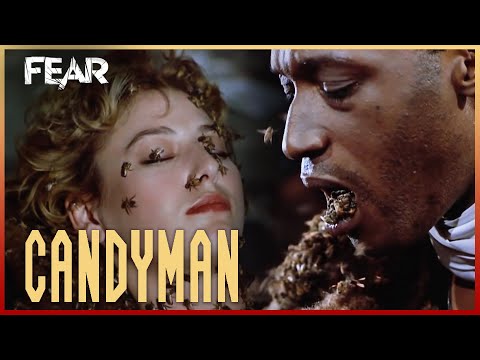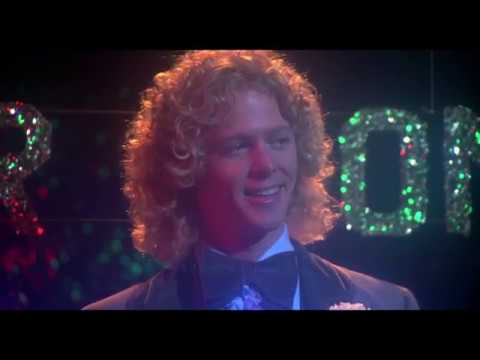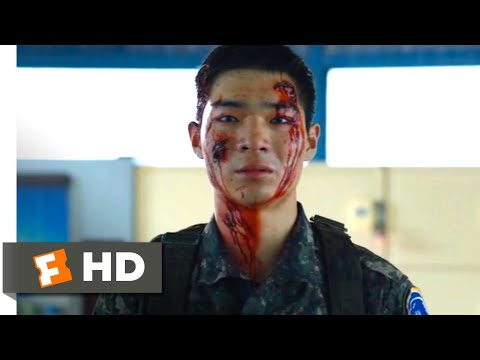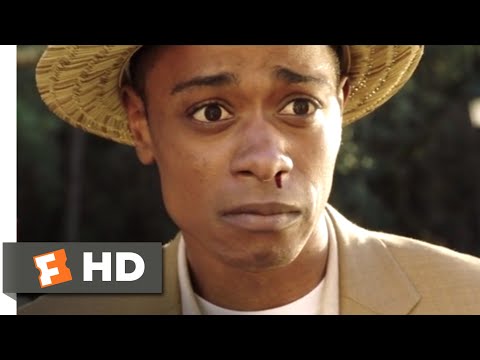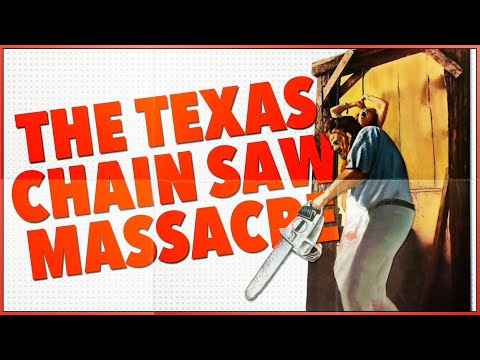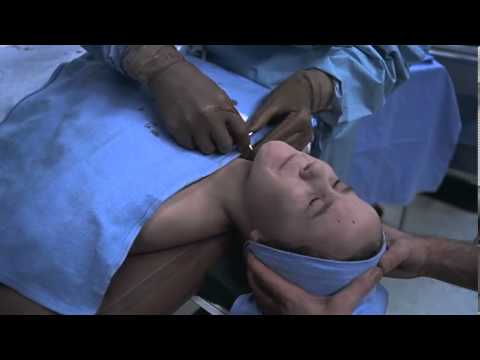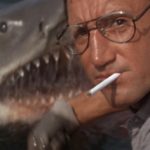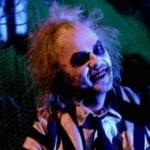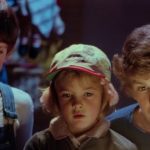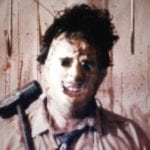However, the making of these movies can be just as interesting and sometimes just as scary as the movies themselves. So here are 10 behind-the-scenes facts about some of the most popular horror films.
10 Real Bees Were Used in Candyman
Every single bee seen onscreen in Bernard Rose’s Candyman (1992) is real. This means that, in the film’s climax, Tony Todd, who played Candyman, had hundreds of bees crawling over his body and in his mouth. Todd explains that “I had a dental dam that prevented any kind of intake, and I just had balls of steel.” Over the course of three movies, he was stung 23 times, but his lawyer negotiated a $1,000 bonus for each sting. Virginia Madsen, who played graduate student Helen Lyle, is allergic to bees, so she was understandably more apprehensive. She recalls that Rose said, “No, you’re not allergic to bees; you’re just afraid.” She was tested, and it was discovered that she was actually more allergic to wasps, but paramedics were present just in case. Other safety precautions included using young bees as their venom is not as strong and applying synthesized queen bee venom to the actors because, theoretically, the bees would then not attack.[1]
9 Sissy Spacek’s Commitment to Her Role in Carrie
Director Brian De Palma only let Sissy Spacek audition for the role of Carrie in his 1976 adaptation of Stephen King’s Carrie (1974) as a favor to her husband, Jack Fisk, who was the film’s production designer. Determined to get the role, Spacek showed up in a sailor dress she wore in junior high and recalled that she “didn’t brush my teeth, didn’t wash my face, [and put Vaseline in my hair so it would look dirty and unkempt.” Spacek was hired and remained dedicated to her performance, alienating herself from the rest of the cast to ensure that she was in the same vulnerable mental state as Carrie. Her co-star P. J. Soles explains that after the prom scene where Carrie is showered with pig’s blood, Spacek “slept in that blood for three days” to ensure continuity. Spacek also performed the final shot of Carrie’s hand punching through her own grave, despite De Palma wanting a stunt double to do it because of the risk of injury. She remembers, “I had to push my hand up through this thing that was covered in pumice rocks. So my hand was getting very raw from doing that!”[2]
8 Michael Myers Wears A Captain Kirk Mask in Halloween
The mask that Michael Myers wears in Halloween (1978) is iconic, but John Carpenter merely described it as “a pale mask” that is “almost featureless.” Production designer Tommy Lee Wallace was tasked with creating the mask on a small budget and decided to modify a cheap store-bought mask. He considered a mask of the clown Weary Willie but went with one of Star Trek’s Captain Kirk because it “was just kind of a blank face, it didn’t really look like anybody.” Wallace made a few changes to make it suitably creepy: he cut larger eye holes, tore off the eyebrows and sideburns, messed up the hair, and spray-painted it white. Carpenter quips, “I guess I owe the success of Halloween to William Shatner.” Shatner, thinking his face being in a horror movie is funny, dressed up as Michael Myers to take his kids trick-or-treating one year.[3]
7 Breakdancing Zombies in Train to Busan
Director Yeon Sang-ho wanted the zombies in Train to Busan (2016) to have jerky and erratic movements rather than merely shuffling along. To help the actors master this, Yeon hired a team of breakdancers “to create specific choreography for our film and to coach our human zombies. We had our actors learn some very strange dances, with unnatural movements like having broken elbows.” These unnatural movements meant that Gong Yoo, who plays workaholic dad Seok-woo, faced more of a challenge during fight sequences, though. “Even if I try to match their movements, their bodies are always convulsing and their arms twisted, so when they attack, it’s hard to take it from the receiving end,” he comments. “It’s also difficult to figure out where to hit them during fight scenes because zombies are always moving.”[4]
6 A Double Amputee Was Used for the Chest Chomp in The Thing
The incredible practical effects in John Carpenter’s The Thing (1982) were created by Rob Bottin, who was only 21 when he joined pre-production. One of the best effects he made is the chest chomp, where Cooper (Richard Dysart) uses a defibrillator on Norris (Charles Hallahan) and has his arms bitten off after they punch through his chest. A fake body was made out of fiberglass and fixed to Hallahan, whose head and arms poked out from his position under the table. The chest was fitted with a hydraulic mechanism that snapped shut on realistic-looking arms made of Jell-O, wax bones, and rubber and gelatin veins. These arms were glued onto Joe Carone, a double amputee who wore a prosthetic mask of Dysart. The mechanism closing tore the fake arms off and sent gore flying while Carone flailed his genuinely amputated arms in the air. Bottin’s relentless commitment to the effects landed him in a hospital when filming wrapped; he had a bleeding ulcer, exhaustion, and double pneumonia.[5]
5 An Eddie Murphy Joke Partly Inspired Get Out
Jordan Peele cites a number of inspirations for Get Out (2017), including racial politics in America during the Obama administration, his own experience of dating a white girl and meeting her parents, and even an Eddie Murphy joke. In Murphy’s 1983 stand-up show Delirious, he talks about how a black family would react differently to a white family in a horror movie. “In the Amityville Horror, the ghost told them to get out the house. White people stayed in there,” whereas he would just “tip the f*ck out the door.” Taking the lead from this joke, Peele had the black characters in Get Out react realistically. He explains that this is because “there is a heightened awareness that black Americans have developed in looking out for racism and the real horrors that we’ve been subjected to for years.” Peele believes that the realistic reactions work regardless of race, though, because “it’s satisfying to see a movie where somebody at least is aware that this could go into a horror situation.”[6]
4 Rare Replicas of the Pop-Up Book from The Babadook
Horror and children’s pop-up books are not a usual partnership (for obvious reasons), but they were the perfect combination for Jennifer Kent’s The Babadook (2014). In 2015, Insight Editions published 6,200 replicas of the Mister Babadook book, designed by illustrator Alex Juhasz, which plagues widowed mother Amelia and her son Sam throughout the film. Simon Arizpe, the book’s paper engineer, explains that “the specifications of the book are the same in the limited edition copies as they were in the film version, such as the color, binding and trim size.” As the movie doesn’t show every page, they created “several new pages to complete the story.” A second edition was released in 2019, but it was also a limited run. Copies are rare, but they do occasionally pop up for sale online at a considerably inflated price. Alternatively, you can watch a flip-through of the book on YouTube.[7]
3 The Bloody Bed Scene Going Wrong in A Nightmare on Elm Street
The scene in Wes Craven’s A Nightmare on Elm Street (1984) where Glen (Johnny Depp) is pulled through his bed by Freddy Krueger (Robert Englund) and a geyser of blood pools on the roof was achieved with a revolving room. Everything was nailed down, and then the entire room was flipped upside down. Roughly 220 gallons of fake blood, which was water, red food coloring, and poster paint (to thicken it), was poured through the hole in the bed. However, the shot didn’t go exactly as planned. The water became electrified when it hit the light on the ceiling, shocking the man who was pouring the water (he wasn’t seriously injured). Another issue was caused by the film’s low budget, which meant that the room was manually rotated by the crew rather than by a motorized mechanism. As the water sloshed around, the crew lost control, and the room began to unexpectedly rotate. Although this was a mistake, the shot finishing with the angle veering off is creepier than if gravity remained the same.[8]
2 The Horrific Filming Conditions of The Texas Chain Saw Massacre
The most horrific part of Tobe Hooper’s The Texas Chain Saw Massacre (1974) is the dinner scene. Filmed in Texas in the height of summer, the scene where Sally (Marilyn Burns) was tormented by her cannibalistic captors around the dinner table took 26 hours to shoot. The temperatures soared to well over 100°F (38°C), and the room smelled putrid because of the animal hides and bones. Watch this video on YouTube Gunnar Hansen, who played Leatherface, recalls that “the food on the table rotted so fast they had to throw it away every couple hours and put out fresh head cheese and sausage.” Head Cheese was actually in the running for the film’s title. Joseph Lanza, author of The Texas Chain Saw Massacre: The Film That Terrified a Rattled Nation (2019), reports that the heat was so intense that the cast and crew “had to run outside for oxygen and periodic vomit breaks.” Burns had the worst time of all, though. She fainted after really being beaten, and Hansen actually cut her finger when the prop knife and fake blood for the shot of the decrypt Grandpa sucking her finger failed. “When I was crazy at the end of the movie, laughing hysterically, that wasn’t acting,” Burns comments. “That was me, having to go back and do it one more time.”[9]
1 A Convicted Murderer Acted in The Exorcist
The making of The Exorcist (1973) was allegedly cursed. Nine people who worked on the film died during or just after production, and a number of other disasters occurred, ranging from fires to injuries. Stories of a curse may have been deliberately spread in an effort to create buzz, with director William Friedkin even claiming that “after all I’ve seen on this film, I definitely believe in demonic possession.” However, it was not until several years after the film’s release that one of the cast members was convicted of murder. Friedkin wanted the scene where Regan (Linda Blair) undergoes an angiogram to be as realistic as possible, so he employed actual doctors rather than actors. In 1979, the radiological technician in this scene, Paul Bateson, was convicted of the murder of Addison Verrill and suspected of several other murders. Friedkin then used Bateson’s case as inspiration for his controversial crime thriller Cruising (1980).[10]
